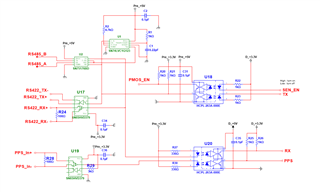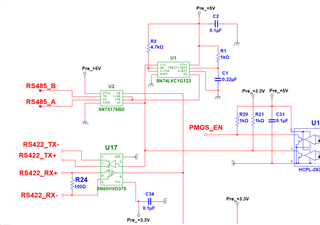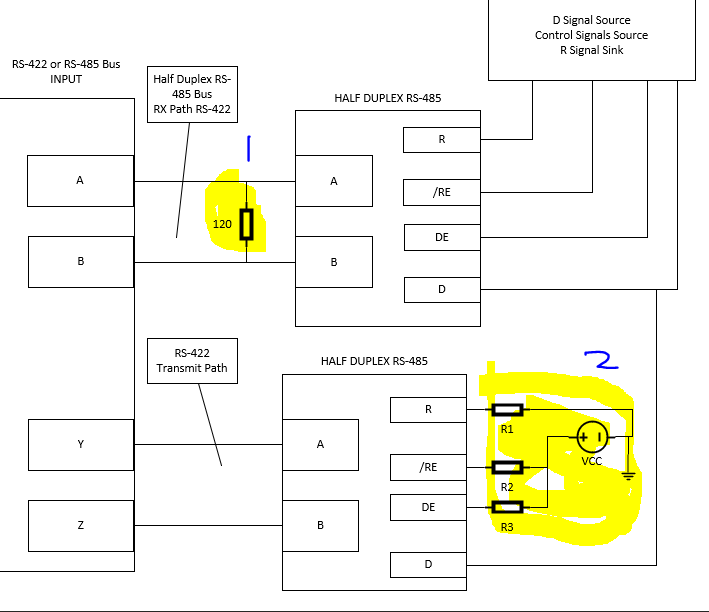Other Parts Discussed in Thread: SN74LVC1G07, , THVD1520, THVD1426, THVD1552, THVD1551
Hi there,
Good day.
This is a product project I'm working on. I want it to be able to provide two different interfaces (RS485 and RS422) and have separate connectors for each. Since there won't be two connectors used at the same time, I paralleled them as follows: (The second image is a zoomed-in portion of the top left corner.)


The problem now is that I am not sure if this design is correct, can you give me advice? Or is there a better solution?
Best wish,
Ryan Yang



